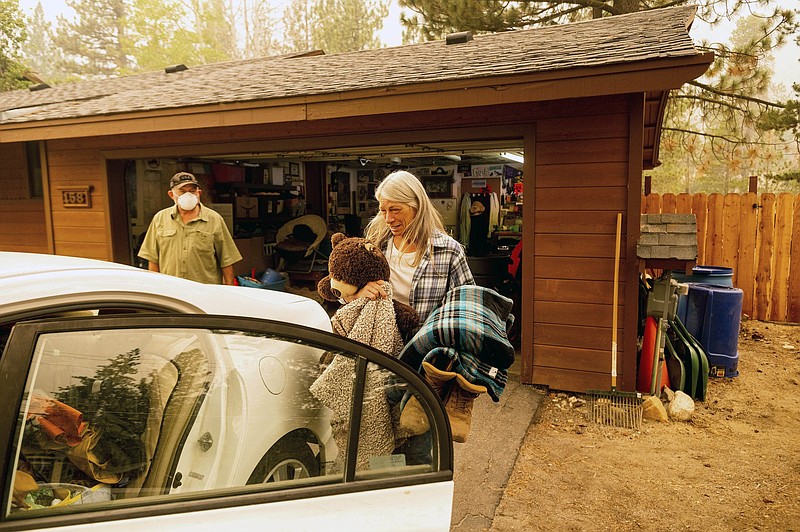SOUTH LAKE TAHOE, Calif. -- Firefighters faced a critical day in efforts to prevent a California wildfire from reaching the Lake Tahoe resort region Saturday, fearing that hot, gusty winds could fuel the stubborn blaze.
The Caldor Fire churned through mountains just southwest of the Tahoe Basin, cloaking much of the area in toxic smoke and sending tourists packing at a time when summer vacations would be in full swing ahead of the Labor Day weekend. Hot winds gusting at up to 35 mph were forecast for Saturday.
"It's going to be a very pivotal day for us," said Capt. Stephen Horner, a Cal Fire spokesman.
The fire's eastern edge was about 7 or 8 miles from the city of South Lake Tahoe and did not advance much overnight Friday thanks to operations known as "backfiring," where firefighters get ahead of the blaze and burn up fuel so the fire has nothing to ignite, Horner said.
"They did backfiring operations that were nothing short of amazing last night in that area," Horner said Saturday.
The Department of Defense is sending 200 U.S. Army soldiers from Washington state and equipment including eight U.S. Air Force C-130 aircraft to help firefighters in Northern California, the U.S. Army North said in a statement. The soldiers are expected to arrive in California in early September after a week of training. The C-130s have been converted into air tankers that can dump thousands of gallons of water on the flames.
The Caldor Fire, burning since Aug. 14 in the Sierra Nevada, increased grew slightly overnight Friday to about 230 square miles, but crews were able to get it 19% contained, Horner said.
It has proved so difficult to fight that fire that managers last week pushed back the projected date for full containment from early this week to Sept. 8. But even that estimate was tenuous.
Climate change has made the western states warmer and drier in the past 30 years and will continue to make the weather more extreme and wildfires more destructive, according to scientists.
South Lake Tahoe City Manager Joe Irvin issued an emergency proclamation Thursday so the city can be better prepared if evacuation orders come and be reimbursed for related expenses.
Fire crews in northeastern Minnesota were working Saturday to put out the largest of numerous wildfires in region, where smoke from the blazes prompted a warning to residents to remain indoors.
An air quality alert issued by state regulators was extended until 9 a.m. today, the Star Tribune reported. The extension came as an unhealthy band of smoky air stretched from International Falls through the Iron Range to south of Brainerd.
The Minnesota Pollution Control Agency said the "fire will continue producing smoke within the existing fire perimeter."
In addition to the Greenwood Lake fire -- the largest in the region -- and other fires to the east, there are blazes just across the border in the Canadian Quetico Provincial Park that continue to burn with no containment, the agency said.

